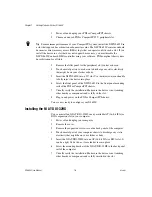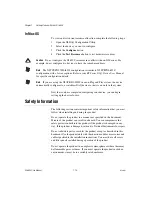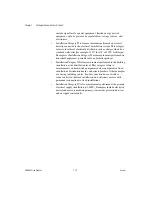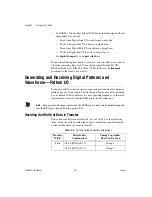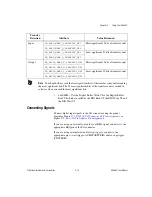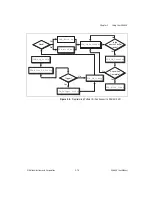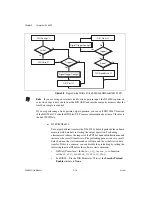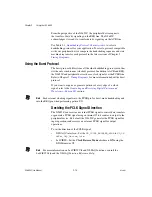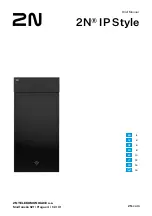
Chapter 2
Using Your NI 653X
©
National Instruments Corporation
2-3
Using the open-collector driver has the following advantages:
•
It connects two or more open-collector outputs together without
damaging the drivers.
•
It connects open collector outputs to open-collector drivers, to GND
signals, or to switches connecting to GND signals, without damaging
the drivers.
•
It uses open collector outputs bidirectionally; if you connect
open-collector outputs together, you can read back the value of a pin to
determine if any connected outputs are logic low.
Using Control Lines as Extra Unstrobed Data Lines
The NI 653
X
has two timing controllers (Group 1 and Group 2) for
high-speed data transfer. Each group contains four control lines which can
time the input/output of data with hardware precision. You can use Groups
1 and 2 to perform the following actions:
•
Generate or receive digital patterns and waveforms at regular intervals
or timed by an external TTL signal
•
Transfer data between two devices using one of six configurable
handshaking protocols
•
Acquire digital data every time the state of a data line changes
Note
If you configure either group to perform handshaking I/O or pattern I/O, the
associated timing control lines for that group are not available for unstrobed I/O.
If you are not using Group 1 and/or Group 2 as timing controllers to
perform pattern I/O or handshaking I/O, you can use their control lines as
extra data lines. These lines constitute Port 4. The direction and output
driver type of these lines are
not
configurable—four lines are used as input
only and four are used as standard output only. Even though there are eight
actual lines, the port width for Port 4 is 4 bits. In software, these lines are
collectively referred to as Port 4. When writing to Port 4, the output lines
are affected; and when reading from Port 4, the input lines are read.
Table 2-1 displays how Port 4 lines are organized.
Содержание NI 653 Series
Страница 1: ...PCI 6533...








